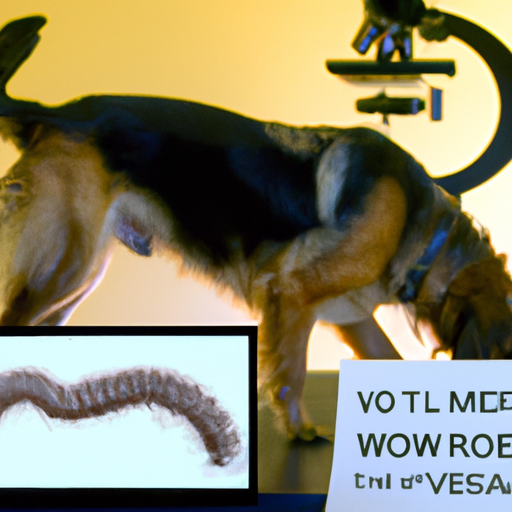As a dog owner, your pet’s health is likely one of your top priorities. Part of maintaining their well-being involves understanding the potential threats they face. One such threat is tapeworms, a type of parasite that can live in your dog’s intestines. This guide will delve into the details of how dogs can get tapeworms, the signs to look out for, and how to prevent and treat this condition.
- How Dogs Get Tapeworms
- Recognizing the Signs of Tapeworms
- How to Prevent Tapeworms
- Treatment Options for Tapeworms
- Frequently Asked Questions
How Dogs Get Tapeworms
Dogs generally get tapeworms by ingesting a host that is carrying tapeworm eggs or larvae. This host is typically a flea. When a dog chews or licks its skin as a response to a flea bite, it can accidentally swallow the flea. If the flea is infected, it can then pass on the tapeworm.
Alternatively, dogs can get tapeworms by eating an infected animal, such as a rabbit or a rodent. This is more common in dogs that spend a lot of time outdoors or are used for hunting.
Recognizing the Signs of Tapeworms
Spotting the signs of a tapeworm infection early can help your dog get the treatment they need faster. Here are the most common symptoms:
- Weight loss: Despite eating normally, your dog might start losing weight.
- Increased appetite: Your dog may seem unusually hungry.
- Dragging their bottom on the ground: This behavior is known as scooting, and it’s often a sign of irritation in the anal area.
- Visible segments in your dog’s feces: You might see small, rice-like segments in your dog’s stool, or around their rear end. These are pieces of the tapeworm.
If you notice any of these signs, it’s important to consult with a veterinarian as soon as possible. You can learn more about the symptoms of tapeworms in dogs here.
How to Prevent Tapeworms
Preventing tapeworms largely involves controlling and preventing fleas, which are the most common source of tapeworms for dogs. Here are some steps you can take:
- Regular flea treatment: Using flea treatments regularly can help keep your dog free from fleas.
- Keep your dog’s environment clean: Regularly cleaning your dog’s environment, including their bedding and any common areas they use, can help to control fleas.
- Avoid allowing your dog to eat rodents or other small animals.
- Regular vet check-ups: Regular vet check-ups can help to catch any potential issues early.
You can learn more about preventing fleas here.
Treatment Options for Tapeworms
If your dog does get tapeworms, it’s important to know that effective treatments are available. These usually involve oral or injectable medications that kill the tapeworms. Your vet will be able to provide the best treatment option for your dog.
For more information on treating tapeworms, check out OneTopDog’s guide on deworming.
Frequently Asked Questions
What are tapeworms?
Tapeworms are flat, segmented worms that live in the intestines of some animals. Animals can become infected with these parasites when grazing in pastures or drinking contaminated water.
How serious are tapeworms in dogs?
While tapeworms are not usually life-threatening, they can cause discomfort and lead to weight loss and other health issues. If you suspect your dog has tapeworms, it’s important to seek veterinary care.
Can humans get tapeworms from dogs?
It’s rare, but humans can get certain types of tapeworms from dogs. This usually happens when a person accidentally ingests a flea infected with tapeworm larvae.
In conclusion, tapeworms are a common problem that dogs can face. As a dog owner, understanding how dogs get tapeworms, recognizing the signs, and knowing how to prevent and treat them can help ensure your dog’s health and comfort. Be sure to check out OneTopDog’s comprehensive guide on dog health for more useful information on maintaining your pet’s health.



